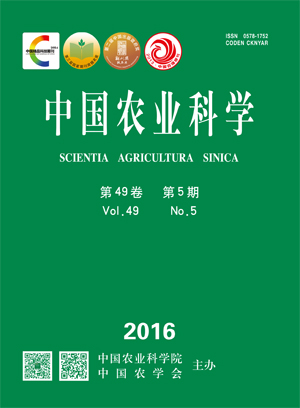【Objective】The characteristics of nitrogen pools in 0-90 cm soil depth and the nitrogen balance was elucidated to make clear the potential of nitrogen immobilization under the current farmers’ fertilizer practices in typical spring maize planted in northeastern China.【Method】Seventeen sites in each of the provinces of Heilongjiang, Jilin, and Liaoning, adding up to 51 sites, were observed on the farmer’s agricultural systems during the whole growth period of spring maize in the year of 2012. The soil total nitrogen (TN), mineral nitrogen (NO3-N, NH4-N), particulate organic nitrogen (PON), microbial biomass nitrogen (SMBN), and dissolved organic nitrogen (DON) in 0-30, 30-60, 60-90 cm soil depth and spring maize yield were determined, and nitrogen balance between before the maize was sown and after the maize was harvested was calculated.【Result】The TN stock of 0-90 cm soil depth in Heilongjiang, Jilin, and Liaoning was 357.9, 286.9, and 218.1 kg·hm-2 respectively in typical spring maize planted in northeastern China. The mean of TN stock in each province was significant (P<0.05). In 0-30 cm soil depth, the mean of TN concentration in Heilongjiang, Jilin, and Liaoning province was 1.4, 1.0, 0.7 g·kg-1, respectively; moreover, the mean of TN concentration in each province was significant (P<0.05). In 30-60 cm or 60-90 cm soil depth, the mean of TN concentration in Heilongjiang, Jilin, and Liaoning provinces were 0.9, 0.6, 0.4 g·kg-1and 0.6, 0.4, 0.3 g·kg-1, respectively, and in either soil depth, the mean of TN concentration in Heilongjiang was significantly (P<0.05) higher than that in Liaoning. In 0-30 soil depth, the difference of the mean of PON concentration, PON/TN, SMBN/TN among Heilongjiang, Jilin, and Liaoning provinces increased and SMBN concentration decreased as latitude decreased, and the difference of the mean of PON concentration, PON/TN, or SMBN concentrations at each province was significant (P<0.05) respectively. The difference of the mean of SMBN/TN between Heilongjiang and Liaoning provinces was significant (P<0.05). In 30-60 cm soil depth, the mean of PON/TN among Heilongjiang, Jilin, and Liaoning provinces increased as latitude decreased, and the difference of the mean of PON/TN at each province was significant (P<0.05). The mean of PON concentration in Heilongjiang province was significantly (P<0.05) lower than that in Jilin or Liaoning province, and the mean of DON concentration in Heilongjiang province was significantly (P<0.05) higher than that in the other two provinces. The mean of DON/TN in Jilin province was significantly (P<0.05) lower than that in Liaoning province. In 60-90 cm soil depth, the mean of SMBN or SMBN/TN in Jilin province was significantly (P<0.05) higher than that in Heilongjiang and Liaoning provinces, and the mean of DON/TN in Heilongjiang was significantly (P<0.05) lower than that in Jilin or Liaoning provinces. On the whole, total nitrogen and soil active nitrogen pools at each province decreased as the soil depth increased. The mean of NO3-N in Liaoning province in 0-30 cm soil depth was significantly lower than that in Heilongjiang or Jilin province, and the mean of NH4-N in Heilongjiang and Jilin was significant (P<0.05). The mean of NO3-N in Jilin province in 30-60 cm or 60-90 cm soil depth was significantly (P<0.05) higher than that in Heilongjiang or Liaoning province. Because of the highest nitrogen rate in Jilin province among the three provinces, nitrogen balance in Jilin province was significantly (P<0.05) higher than the other two provinces, and Jilin province showed N surplus, while Heilongjiang and Liaoning province showed a balanced N on the whole. In the year of 2012, the mean of the yield of maize in Heilongjiang, Jilin, and Liaoning provinces was at 11.9, 11.3 and 10.8 t·hm-2 respectively, and the average yield in Heilongjiang province was significantly higher than the other two provinces.【Conclusion】 There wasn’t completely consistency in the increased or decreased trend between total nitrogen and soil active nitrogen pools among Heilongjiang, Jilin, and Liaoning provinces; the yield maintained 11.0 t·hm-2 in northeastern China on the whole, and the negative environmental effect of nitrogen in the spring maize planted region in Jilin province was relatively higher than the other two provinces.









